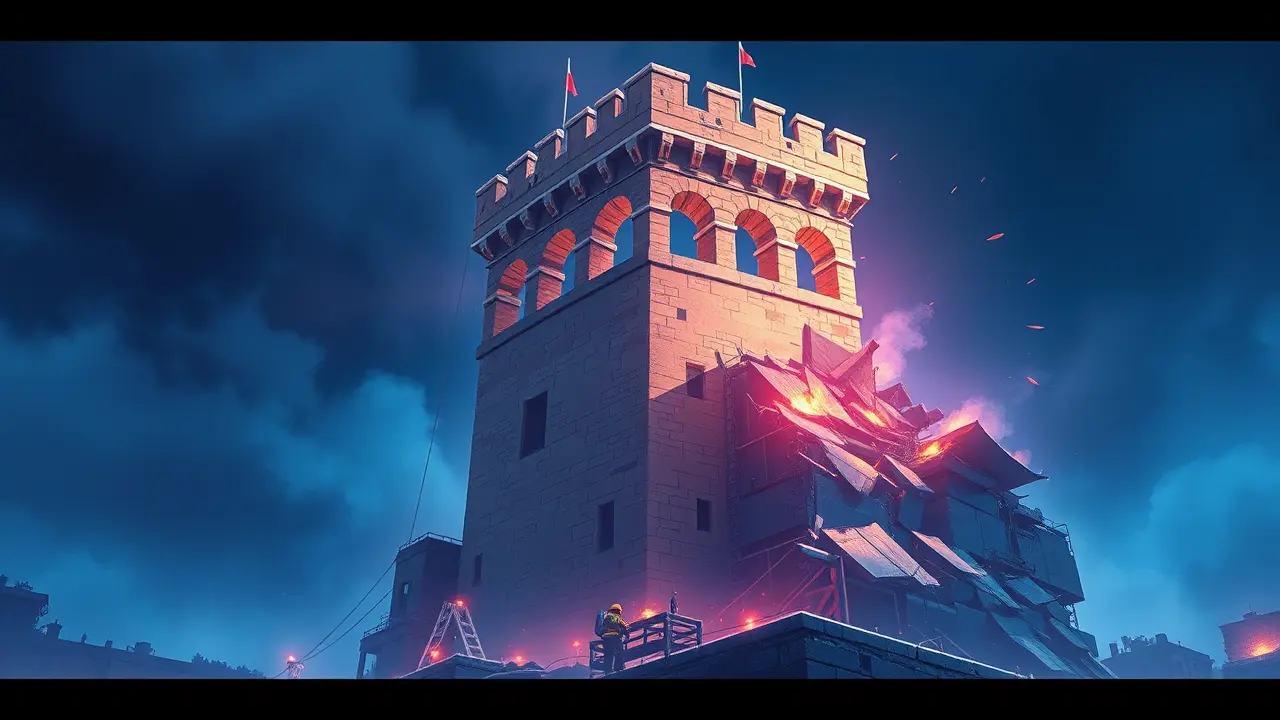
Otheraccidents & disastersBuilding Collapses
Medieval Tower Collapses During Renovation in Rome.
OL
Oliver Scott
9 hours ago7 min read
The sudden, partial collapse of the medieval Torre dei Conti in Rome during routine renovation work on Thursday was not merely a structural failure but a profound systemic shock, exposing the fragile equilibrium between preserving a millennium of history and managing the inherent risks of modern intervention. As firefighters successfully rescued four workers from the debris with operations ongoing to secure the site, the immediate human drama rightly takes precedence, yet the incident demands a broader risk analysis that extends far beyond the dust-choked air of the Imperial Forums.The Torre dei Conti, a formidable fortress-tower erected by Pope Innocent III in the 13th century, has withstood sieges, earthquakes, and the relentless passage of time, only to falter during a period of intended care. This event immediately triggers a scenario-planning exercise: what are the cascading consequences? The most direct risk is to Italy's cultural patrimony, raising urgent questions about the protocols and oversight governing restoration projects on protected monuments.Was the contractor vetted for expertise in historical masonry? Were the vibrations from contemporary equipment improperly calibrated for ancient Roman concrete and tufa stone? The potential for reputational damage to the firms and governmental bodies involved is immense, likely triggering frozen funding for other critical restoration projects like the ongoing efforts at the Colosseum or the Palatine Hill. Furthermore, we must model the political and financial fallout.The Italian Ministry of Culture, under Minister Gennaro Sangiuliano, now faces a firestorm of parliamentary inquiry and public scrutiny, a crisis that could destabilize current cultural policy and budget allocations. From a market perspective, consider the impact on insurance premiums for heritage construction projects across Europe, potentially making them prohibitively expensive and slowing conservation efforts from Athens to Paris.This collapse is a stark reminder that historical sites are not static relics but dynamic assets embedded with significant, and often underestimated, political, economic, and social risk. The investigation's findings will be critical; a verdict of human error or cost-cutting negligence would point to a failure of governance, while an unforeseen geological shift or a latent weakness from a WWII-era trauma would recalibrate our entire understanding of the tower's resilience. The true cost of this event will be tallied not just in euros for restoration, but in the heightened risk aversion that may now paralyze essential work, leaving other monuments more vulnerable to a far slower, but no less devastating, collapse from neglect.
#editorial picks news
#Rome
#Torre dei Conti
#building collapse
#renovation
#rescue
#firefighters
#medieval tower
Stay Informed. Act Smarter.
Get weekly highlights, major headlines, and expert insights — then put your knowledge to work in our live prediction markets.
© 2025 Outpoll Service LTD. All rights reserved.